Note: This is the fifth essay in an ongoing series.
Is it possible to harmonize economic and social progress with environmental recovery?
That question sets the stage for introducing cultures of regeneration. It’s a response to cultures of extraction, this essay’s prequel, which interrogates the human, social, and environmental harms that are enabled by current economic cultures. This essay will offer several onramps to address these challenges through the regenerative paradigm.1

Regenerative thinking is rooted in the cycles of nature.
Beginning in grade school, children learn to appreciate the natural cycles that enable life to flourish on Earth.
The water cycle constantly regenerates freshwater onto land.
Carbon cycles through all life forms between the air, water, and soil.
Nitrogen and phosphorus also cycle through life forms in the air, water, and soil.

In their introductions to biology, schoolchildren also learn to appreciate the interrelationships among various life forms. For example, a plant’s fruit offers nourishment to animals, a process that then helps the plant reproduce by transporting and fertilizing its seeds.
Throughout the kingdoms of life, a flourishing ecological system results from the interdependence and co-evolution of diverse life forms (plants, animals, fungi, bacteria, etc.) in their natural environments.
In Yellowstone National Park, the reintroduction of wolves after a 70-year absence was credited with regenerating the park’s biodiversity and river ecosystems. Though small in number, the presence of wolves changed deer behavior, enabling vegetation to regenerate. The regeneration of vegetation then reduced soil erosion. This vegetation also produced food and habitats for additional species, such as migratory birds and beavers. The regeneration of beaver populations then resulted in river dams that regenerated the populations of fish and amphibians. Overall, this example demonstrates how thoughtful acts of regeneration can cascade into other positive effects for ecological systems.
Alternatively, extractive behaviors cascade into destructive effects on planetary life.

In 2009, scientists began a collaborative effort to identify and quantify the planetary boundaries that are essential to sustaining Earth’s life systems.2 Through the effects of extractive economies, humanity is exceeding at least six of the nine boundaries and is beginning to experience breakdowns in the forces that sustain life. These six boundaries are:
Land system changes. By destroying natural ecological systems, particularly the Amazon rainforest, the planet’s natural cycles are increasingly disrupted of their regenerative capacities supporting life.
Biogeochemical flows. Through the runoff of excess nitrogen and phosphorus fertilizers from lawns and agriculture, freshwater sources and oceans are becoming contaminated. As a result, life systems are suffocating.
Climate change. Through the cascading effects of industrial greenhouse gas emissions, the global climate systems that modern civilizations rely upon are destabilizing.3 The subcategory of radiative forcing is about disrupting the balance between energy entering and leaving the Earth’s atmosphere.
Novel entities. Through the proliferation of plastics and artificial chemicals into waste streams, the planet’s life systems are impacted in unprecedented and understudied ways.4 One category of these chemicals, PFAS (per- and polyfluoroalkyl substances), has been found in rainwater around the planet and in the blood of 97% of Americans.
Biosphere integrity. Through the excesses upon each planetary boundary, extinction rates are accelerating (E/MSY in the chart below stands for extinctions per million species-years). Genetic diversity refers to the diversity of genes found in life forms. For example, global banana production is under threat because the common Cavendish variety is facing a deadly fungus and there are very few alternatives being grown. Functional diversity refers to the interrelationships among organisms, such as the food chain and the roles that organisms play in the ecosystem.
Freshwater change. As a result of human activities and changing climate conditions, freshwater sources (such as lakes and groundwater) are being polluted, over extracted, and are more frequently imbalanced by floods and droughts. The subcategory of green water refers to the sustainability of water cycles involving plants, mainly rainfall, soil moisture, and evaporation.
Just one of the nine boundaries, ozone layer depletion, has been trending positively due to global cooperation that began in the 1980s. The Montreal Protocol, which negotiated the drawdown of ozone-depleting chemicals, demonstrates the precedence of global nations and their economies to correct planetary issues.
The Netflix documentary, Breaking Boundaries, introduces viewers to the forefront scholar of the planetary boundaries, Johan Rockström. In Rockström’s calculations, humanity can mitigate the most catastrophic tipping points of climate change by halving carbon emissions by 2030 and reaching net-zero emissions by 2050.5
Starting points towards a regenerative future
The shift into mitigating extractive economies and towards a regenerative future is a holistic project involving all aspects of society. Here, we emphasize a few starting points.
Regenerating and integrating indigenous wisdom
For all of modernity’s advancements in science and technology, we have failed to hold our aspirations in balance with the natural world. Yet this wisdom is inherent to the cultures of indigenous people. Braiding Sweetgrass, by Robin Wall Kimmerer, has become a bestselling book that weaves indigenous wisdom with scientific knowledge.
Bioregional stewardship
“If Nature were to draw a map of the world what would it look like?”
- Karl Burkart, One Earth
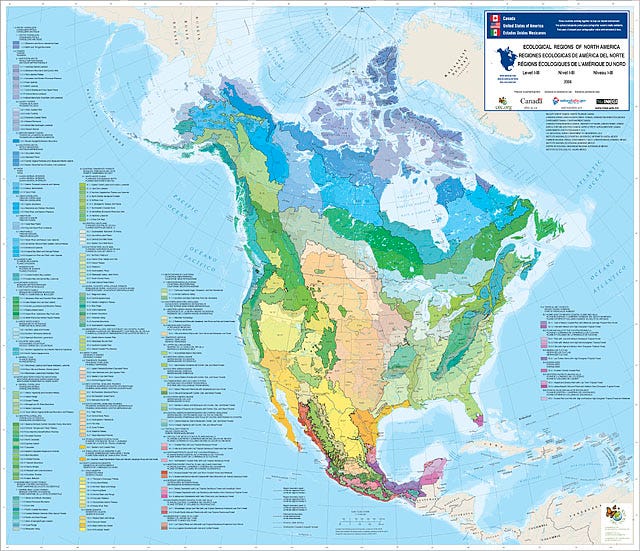
Bioregions, also known as ecoregions, are geographically defined areas based on ecological characteristics, such as climate, soil, vegetation, and wildlife. They are also defined by distinctive geological features such as watersheds and mountain ranges.
By emphasizing bioregional awareness, education, and stewardship, communities can take appropriate actions to conserve and regenerate their natural surroundings.
Aligning economic objectives with living systems principles
The regenerative paradigm is holistic, meaning that economics is far more than a story about marketplaces, production, consumption and efficiency. It’s ultimately about economies that are in service to life and human flourishing.
In 2012, Kate Raworth, an Oxford economist, introduced a model called Doughnut Economics.6 It illustrates the optimal zone for flourishing economies between furthering economic & social progress and operating within planetary boundaries.

In 2015, John Fullerton synthesized a vision for economic change in a whitepaper titled Regenerative Capitalism. Formerly a Wall Street executive, Fullerton left the financial industry in 2001 to begin an extended inquiry. He concluded that the modern economic and financial systems have rooted today’s greatest ecological, economic, and social crises.7 Shortly after the 2008 financial crisis, he founded the Capital Institute and proposed 8 principles of a regenerative economy.8
It’s a circular model that represents the principles as being interrelated, just as living systems are interrelated. One of its principles is viewing wealth holistically, emphasizing that a flourishing economy is far more than financially, materially, and technologically successful. Within regenerative economics, human flourishing is recognized to also be intellectually, relationally, culturally, experientially and spiritually abundant.

Janine Benyus is the prominent face of biomimicry, a multidisciplinary field guiding human innovation toward replicating natural models, systems, and elements.9 In its application to human systems, biomimicry points industries towards circular economies where resources are reused rather than extracted and wasted.10
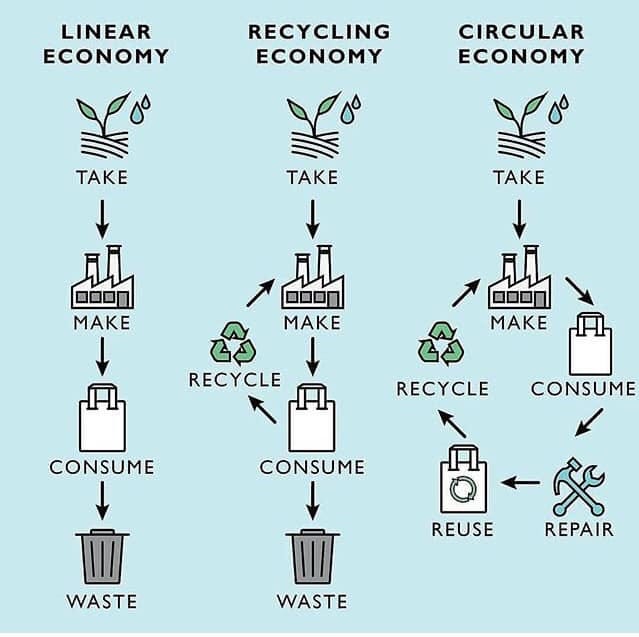
Further reading:
In 2021, Paul Hawken published Regeneration: Ending the Climate Crisis in One Generation and an accompanying website. The project offers an extensive collection of initiatives towards the regeneration of human health, communities, and natural ecologies.
Conclusion
According to figures compiled by Earth Overshoot Day, it’s estimated that the United States consumed the annual regenerative capacity of its natural systems on March 13th of this year (2023).11 That’s approximately five-times sustainable levels and is trending in the wrong direction.
This essay has begun to introduce what a transition looks like from extractive economies towards a regenerative future. Further stimulation on the regenerative paradigm can be found in the appendix and footnotes below.
In our next essay, we culminate this inquiry into a theory for corporate purpose that empowers free societies to move forward on these issues.
Published February 1st, 2022 (1.0)
Updated March 16th, 2024 (1.32)
Appendix: Examples of regenerative transitions
Regenerating lawn care into bioregional stewardship
In order to sustain a single-species organism (turfgrass), lawn care necessitates the unsustainable application of freshwater, fertilizers and herbicides. These activities directly contribute to four planetary boundary crises: freshwater withdrawals, nitrogen & phosphorus loading, chemical pollution, and biodiversity loss.
The initial development of these land plots also required land conversion, a fifth planetary boundary.
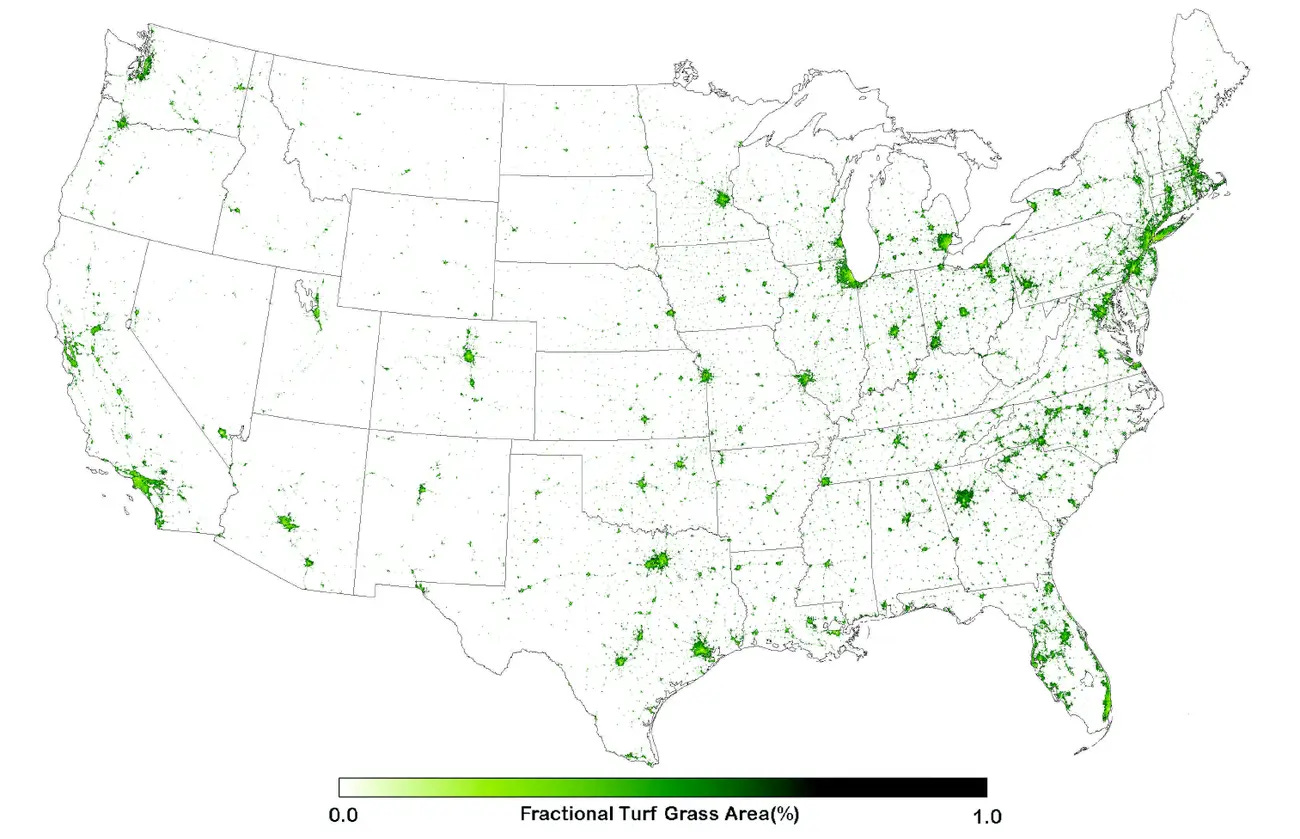
Clover lawns are a popular alternative to grass, requiring less mowing while being drought resistant and accommodating to poor soils. The clover flower is an abundant source of nectar for bees, enabling homeowners to save time and money on lawn care while regenerating local pollinator populations.
To sequester carbon and regenerate bioregional ecologies, homeowners can also plant trees and large bushes. These plants also offer the potential benefits of beauty, birdlife, shade, privacy, wind barriers, and flood resilience.
Through the addition of a garden, both adults and children can benefit from the education, responsibilities and joy of growing one’s own good. Families can also reduce waste streams by composting appropriate kitchen scraps as fertilizer.
Regenerating communities
Community spaces are where economic, social, and ecological considerations combine. The following examples offer brief inspiration for communities navigating from extractive to regenerative paradigms.
In downtown Richmond, Virginia, there are underdeveloped concrete corridors near commercial offices, a university, historic landmarks, public parks, and a river.

A non-profit foundation in the city is reimagining these corridors with natural life and community infrastructure. With success, these projects would regenerate the district’s residential, commercial, and leisure economies while reducing its carbon footprint and runoff to the city’s storm drains.

The High Line Network highlights approximately 40 projects across North and Central America reusing existing urban infrastructure for regenerative purposes.
Large Cities
In the 1970s, an infrastructure project in Seoul, South Korea, covered a natural stream with an elevated highway. This project epitomized cultures of extraction by pursuing an economic priority at the expense of a natural ecosystem, living conditions for the surrounding communities, and air quality.
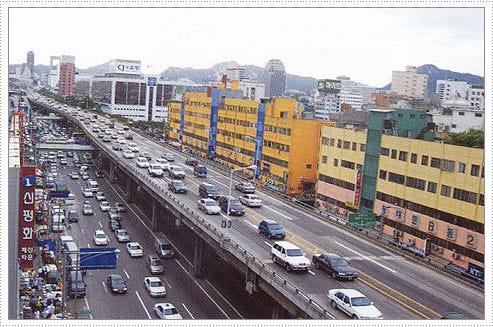
In lieu of a costly renovation to the highway in the early 2000s, the city government decided to tear down the highway and restore the river basin as a public park. The project regenerated some of the native habitats, cleared air pollution, lowered carbon emissions, improved climate resilience, reconnected its urban communities, attracted private investment to the surrounding neighborhoods, and was visited by over 50 million tourists in its first two years.

Overall, the objective of this essay is to steer toward a harmonious future for business with the ideals of free societies and the systems of our natural world.
Citation for “A safe operating space for humanity”, a 2009 study published in Nature.
In Planetary Economics, the project discusses the emerging geological perspective that modern human activities are ending the Holocene epoch (known for climate stability) and are emerging into the Anthropocene epoch.
Novel entities are technically defined as “new substances, new forms of existing substances and modified life forms,” including “chemicals and other new types of engineered materials or organisms not previously known to the Earth system as well as naturally occurring elements (for example, heavy metals) mobilized by anthropogenic activities.” (American Chemical Society)
Rockström’s 2020 TED Talk is titled: 10 years to transform the future of humanity -- or destabilize the planet.
A safe and just space for humanity: Can we live within the Doughnut? By Kate Raworth (Oxfam, 2012)
Through non-profit efforts like the Biomimicry Institute and Ask Nature, the public can learn how industries and innovators use biomimicry to develop regenerative solutions.
The following statement is excerpted from the prologue of Fullerton’s whitepaper:
“This search first opened my eyes to the profound, interlocking crises we are now facing – ecological, economic, and social – including the shocking prospect that we are destroying the planet’s ability to support life as we know it. My most startling discovery, however, was that the modern scheme of economics and finance – what Wall Street “geniuses” (like me) practiced so well-formed the root cause of these systemic crises. This realization occurred before the 2008 financial crisis and exists independent from it. However, that egregious display of irresponsibility, greed, and fraud further confirmed the reality that Wall Street had lost its way.” (pg 2)
Disclosure: The author became affiliated with the Capital Institute through his Introduction to Regenerative Economics course after publishing this essay. Otherwise, this essay was developed without affiliating with the various individuals and organizations cited here.
The 2021 documentary film, Going Circular, captures the work of Fullerton, Benyus, and other leaders in the regenerative movement.
This data was sourced from Earth Overshoot Day and their updated calculations for 2023.




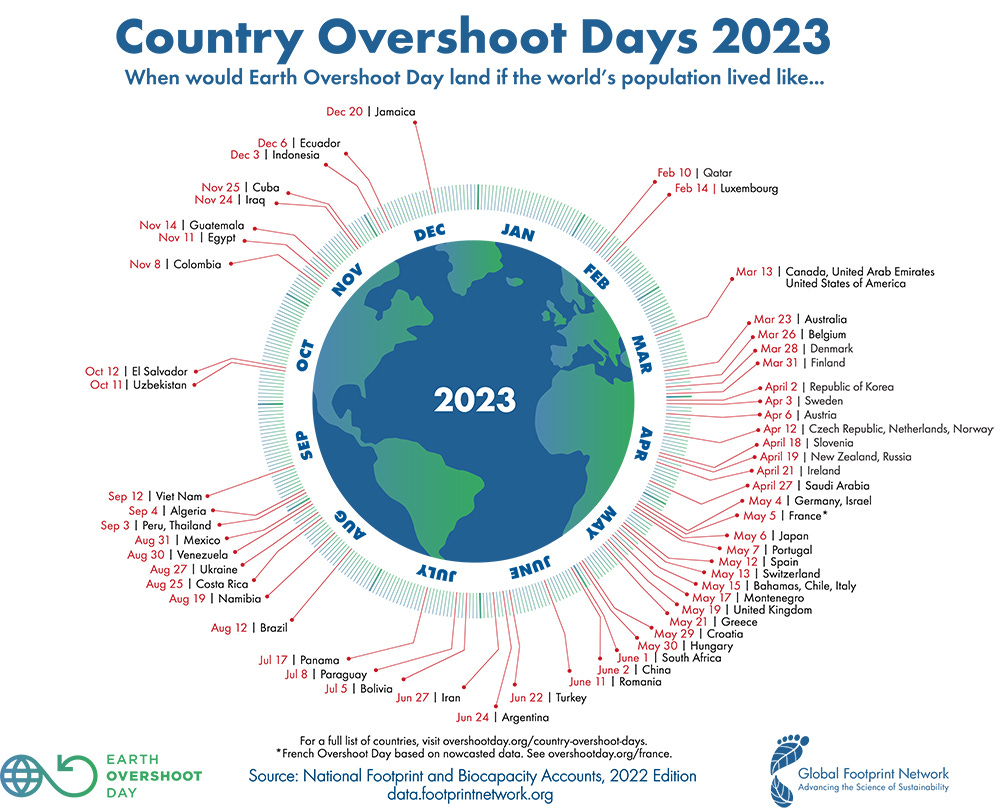

Fascinating stuff, Mike. You've offered up a good high-altitude look at of what has to happen to get the global economy lined up with our natural systems and move forward to greater sustainability. If you and others can motivate enough folks, we can all get to work on fleshing out the details and making it all happen. Keep going...!
David S.
Great summary, Mike. ... capitalism, growth economics, and disruptive technology have manifested in the absence of ecological wisdom -- that is so very true ... unfortunately